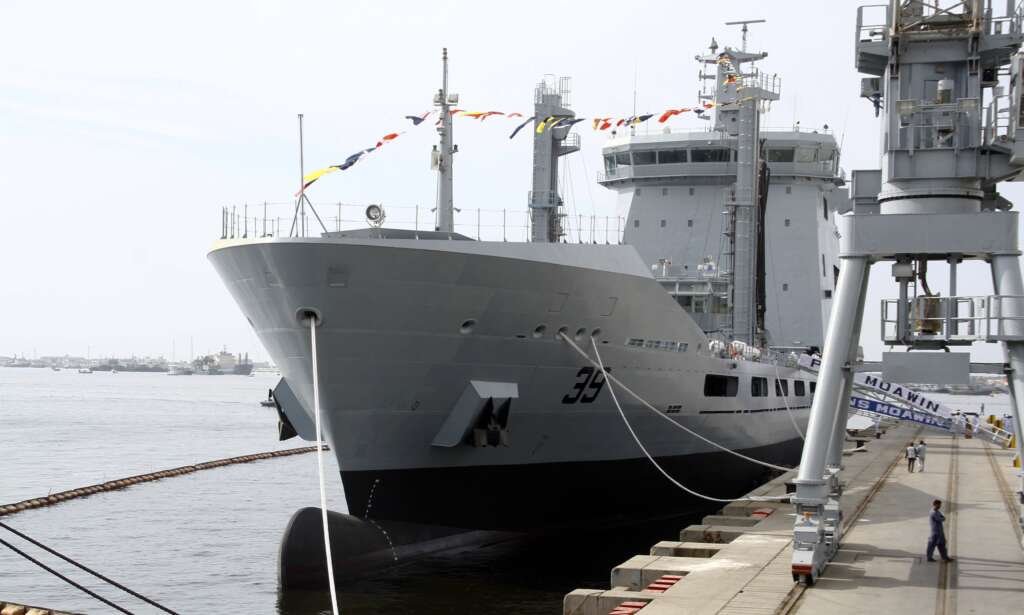The Pakistan Navy (PN) would love to be a blue-water navy. But that’s still a dream.
What does it mean?
Strategists call a “blue-water navy” a naval force that can reach any place in the world, as opposed to a “green-water navy,” which is pretty much limited to the country’s nearby waters.
In itself, having a green-water navy is not bad: not every country needs to project naval power everywhere around the globe. But Pakistan has long sought to project an image of maritime relevance beyond its immediate waters. And a sober assessment of its operational reach, logistical infrastructure, and strategic doctrine reveals a force confined to coastal waters, incapable of sustained power projection beyond the Arabian Sea.
And this is meaningful, because Pakistan’s arch-rival, India, is becoming a blue-water power with global ambitions.
Let’s see why.
The Pakistan Navy’s operational reach, logistical fragility, and coastal-defense doctrine firmly place it in the green-water category.
First, the PN’s fleet is made for its littoral.
It has submarines, but they are five aging Agosta-class, diesel-electric powered, and three Cosmos-class midget submarines. It doesn’t mean they are bad, but they are optimised for shallow-water operations near Pakistan’s coast. They lack the endurance for prolonged oceanic deployments.
This contrasts with India’s nuclear-powered INS Arihant-class submarines, which can patrol submerged for months.
It is the same for boats. The PN’s surface fleet—four Tughril-class frigates and four Damen-built offshore patrol vessels (OPVs)—prioritises coastal surveillance and anti-piracy missions rather than deep-sea combat. The OPV 2600-class ships, despite their modular mission capabilities, are limited to 22 knots and lack the armament for high-intensity naval warfare.
Again, this contrasts with India’s Visakhapatnam-class guided-missile destroyers, displacing 7,400 tons, boasting a 4,000-nautical-mile range and advanced anti-air warfare systems.
The same goes for the PN’s amphibious capabilities: with four Griffon 2000TD hovercraft and two LCM vessels, it can conduct beach assaults but lacks India’s INS Jalashwa, a 17,000-ton dock landing ship capable of deploying battalion-sized forces overseas. In short, it confines the PN to the Arabian Sea.
Logistical Fragility
How do you build a blue-water navy?
First, it requires robust logistical networks, including at-sea replenishment ships and overseas bases. The PN has a replenishment fleet, led by the 27,500-ton PNS Moawin. But this is little in comparison to India’s Deepak-class fleet tankers, which displace 35,900 tons and support extended deployments.
The same goes for overseas bases. India’s access to strategic bases in Duqm (Oman) and Agaléga (Mauritius) provides forward deployment hubs, while Pakistan relies solely on Karachi and Ormara. Sure, the PN recently visited the nearby island nation of Comoros with PNS Moawin. But this was a rare overseas deployment, and it emphasised medical diplomacy.
The same goes for the PN’s aviation wing. Outdated Atlantique patrol aircraft and Z-9EC helicopters offer minimal over-the-horizon targeting capabilities, while India’s P-8I Poseidons and carrier-based MiG-29Ks provide unmatched maritime domain awareness. Without aerial refuelling or advanced reconnaissance assets, the PN’s operational radius remains shackled to coastal radar coverage.

The PN’s 2018 maritime doctrine, Preserving Freedom of Seas, prioritizes anti-access/area denial (A2/AD) strategies, focusing on coastal defense and deterring Indian naval incursions. Investments in Harbah cruise missiles and Agosta-90B submarines reflect this reactive posture, which contrasts sharply with India’s proactive blue-water doctrine emphasising “distant operations” and carrier strike groups.
The PN has no aircraft carriers, no nuclear submarines, and no plans to acquire either, ceding power projection to India’s dual carriers (INS Vikramaditya and INS Vikrant) and Arihant-class SSBNs.
Pakistan’s much-touted Hangor-class submarine program, involving eight Chinese-designed Yuan-class boats, will not alter this calculus. While these submarines may enhance A2/AD capabilities, their diesel-electric propulsion and reliance on foreign technology limit their strategic impact. India’s Project-75, meanwhile, delivers Kalvari-class submarines with air-independent propulsion (AIP), while its nuclear triad—bolstered by INS Arighat—secures second-strike capabilities.
Last but not least, the Indian Navy operates two aircraft carriers, including the 45,000-ton INS Vikrant, which accommodates 30 fixed-wing aircraft and helicopters, while Pakistan lacks even a single carrier.
Read also:
The Pakistan Navy’s operational reach, logistical fragility, and coastal-defense doctrine firmly place it in the green-water category.
While it has tried to modernise to counter India regionally, it lacks the strategic vision, assets, and infrastructure for sustained blue-water operations. India’s maritime expansion—marked by carrier groups, nuclear submarines, and overseas bases—reflects a mature blue-water doctrine.
Pakistan cannot bridge this gap without unprecedented budgetary outlays and doctrinal shifts, neither feasible amid economic crises and geopolitical isolation.
Until then, the PN remains a littoral force, tethered to the shores of the Arabian Sea.

